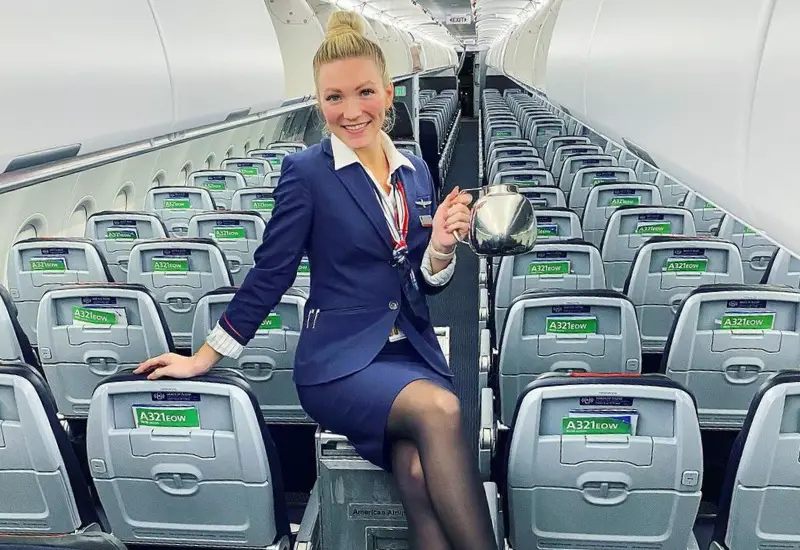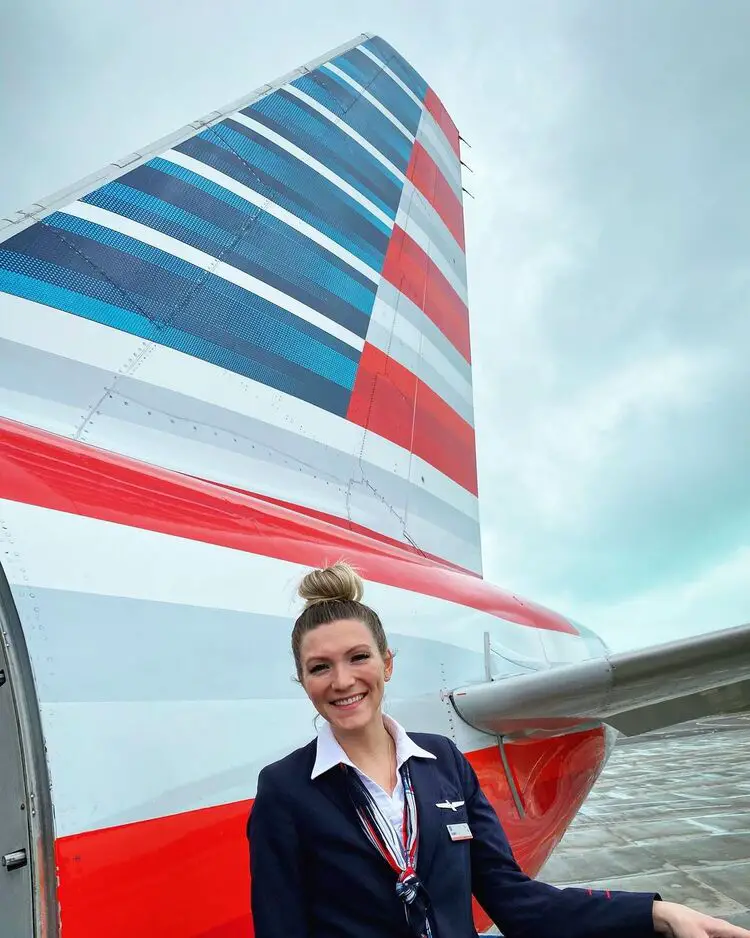
In my personal opinion, American Airlines has a very fair reserve system because it gives flight attendants some control over their schedules while on reserve, and because it evolves with your career; the more seniority you have at American, the less you have to “sit” on reserve.
The only downside to the AA system is its complexity.
When the new reserve system was implemented in 2018, we even had a whole department of trained experts to help us learn how to navigate the system.
Having gone through that training process myself, I will attempt to explain the AA reserve system as simply as possible in this article.
What Does it Mean to be “On Reserve ” as a Flight Attendant?
Being on reserve is like being on call.
It means you are hanging out either at home, or at the airport, waiting for the airline to need you.
At American, we often call it “sitting reserve.”
Reserves are used to fill in “open” trips, in other words, trips with one or more position open due to staffing rearrangement, trip creation, or sick calls.
There are two types of reserve at American:
- Reserve Availability Period (RAP): When you are on RAP you are just waiting for a call from crew scheduling. Depending on where you are based you must be able to show up at the airport in either two or three hours from the time you are called to work. So, you can choose where you hang out, but you have to be close enough to base to make it on time.
- Standby: Some of the more senior flight attendants call this OPR (on premise reserve) which makes sense, because when you are assigned to a standby shift you have to be at the airport, in uniform, and ready to go at a moment’s notice. You will usually be given fifteen minutes from the time you are called until you have to be at the assigned departure gate.
Sitting on reserve can be exciting, you never know where you might be sent, and I got some of my best trip assignments off of reserve.
Turks and Caicos, Rome, and London are all places I got to go. #ThanksCrewScheduling!
How Does Reserve Work at American Airlines?
Reserve at AA is complicated because it is set up around a preferential bidding system.
In this section, I will try my best to break down the basics in the simplest way possible.
The preferential bidding system at American, known as PBS, is a system that allows flight attendants to bid for individual trips, rather than a single month-long schedule.
When applied to reserve, PBS gives flight attendants the opportunity to bid for any open trips, instead of always having to wait for crew scheduling to assign you a trip at random.
Straight Reserve
As a new hire at American Airlines, you will have to serve straight reserve for a set period of time.
Straight reserve does not mean you are on call every day, thank goodness, that would be exhausting!
Rather it means you will have to bid a reserve schedule every month until you reach a certain level of seniority.
Currently you will be on straight reserve for the first 12 months you work for the airline.
Rotating Reserve
After your first year with the airline, you will transition to a rotating reserve system as follows:
- 1-on-1-off (2-5 years): On this rotation you will sit reserve every other month.
So, you will be on reserve for one month, then the next month you will have a regular schedule, and then the month after that you’ll be back on reserve, and so on, and so forth until you reach the next rotation schedule… - 1-on-3-off (5+ years): On this rotation you will sit reserve every third month until you are senior enough to hold off reserve year-round.
A quick note on AA linguistics: At American Airlines we call having a regular schedule “holding a line” and when you are not on a reserve month, you are “on a line month.”
Unique Exceptions
There are two main exceptions to the reserve requirements described above.
- Senior Bumping
- Language exceptions
Senior Bumping
Senior bumping is hard to explain, so bear with me.
This happens when a more senior flight attendant decides that would rather be on reserve than have a line (a regular schedule).
When they bid “down” onto reserve a junior flight attendant has to work a line month in their place.
This can break a period of straight reserve or cause a rotating flight attendant to have two-line months in a row.
You are probably wondering, why on earth would someone want to serve reserve when they could have a schedule?
Some flight attendants with a mid-range seniority will do this in the summer so they can fly more international trips.
This is due to the way the PBS system on reserve works.
If an international trip goes into open time, the more senior flight attendants on reserve will get the trips when they bid for them.
Giving them a chance to fly international routes they otherwise would not be senior enough to work.
Language Exceptions
As a language speaker, you will often be exempted from serving reserve.
Depending on the language you speak, the airline may need to assign you trips to your language destinations, in this case, you will be “pulled up” to a speaker line regardless of your seniority, your rotation, or even what you bid for.
For example, I got off straight reserve about 6 months early because American added an additional route to Germany in my base.
They obviously needed more German speakers to staff each daily flight and I was senior enough already that I could hold a speaker line instead of being on reserve.
It also used to mean my rotation was unpredictable.
I could be pulled off of reserve or dropped down to it depending on how many German trips were operated each month, and how many speakers transferred into, or out of my base on any given month.
These fluctuations made it hard for me to predict when I would, or wouldn’t, be on reserve.

How Long is A Reserve Shift?
Reserve shifts are either 12 hours, 6 hours, or 4 hours depending on whether you serve RAP or Standby.
There are four different RAP shifts at AA.
The exact timeframe of each shift differs slightly from base-to-base, but at my base (Charlotte/Douglas – CLT) the time frames are as follows:
- RAP A: 3am – 3pm
- RAP B: 7am – 7 pm
- RAP C: 12pm – 12am (midnight)
- RAP D: 3pm – 3am
Standby shifts are organized differently and last either 6 hours or 4 hours depending on when the shifts start.
Each Standby shift will be staffed by 2-4 flight attendants.
The last standby shift usually starts approximately four hours before the last flight of the day is scheduled to depart.
How Many Days Per Month do you Sit Reserve?
Depending on how many days are in each month you will have to serve between 17 and 29 days of reserve per month, with 12 days off.
You will have to sit Standby on at least two of those days.
When bidding for a reserve month, you bid for the days you want off, rather than the days you want to work.
How Much Will You Fly on Reserve?
How much you fly on reserve depends on the time of year and your own personal bidding strategy.
I typically flew between 75-80 hours on reserve.
You cannot be required to fly more than 85.01 hours on reserve.
Once you have flown 85.02 hours you will “time out” meaning you can no longer be called by Crew Scheduling.
This does not, however, account for trips that fly you over 85.01.
For example:
If you have 84.99 hours you can be assigned a longer trip, if it does not put you over the absolute maximum of 90 hours. In such cases, you would be automatically timed out as soon as the trip ends.
That said, it is not actually that easy to time out. I think I only was able to do it twice during the four years I worked for AA.
Pro tip: You can pick up trips on your days off, or after you have timed out if you want to fly more than you are used on reserve.
Do You Get Paid While Sitting Reserve?
While on reserve you will be paid a 75-hour guarantee.
This means you will be paid for 75 flight hours whether you actually work that many trips or not.
If you choose to pick up trips on your days off, you will be paid for these trips above (in addition to) your guarantee.
For example:
You flew 68 hours on reserve, and you picked up an extra 20 hours on your days off. You would be paid for 95 hours. Because that’s your 75-hour guarantee + 20 additional hours.
It is good to keep in mind that your guarantee does not include per diem (out-of-base pay).
You will, however, be paid per diem for trips you do work. So, you will make more money if you actually fly.
What Does a Typical Reserve Month Look Like?
It is really hard to paint a picture of a “typical” reserve month at American because no two reserve months are the same.
Seasonal flying, seniority, language qualifications, holidays, pandemics; all of these things can affect the way a reserve month goes.
So rather than trying to generalize the un-generalizable let me tell you about my experience on reserve.
What Reserve at American Airlines was Like for Me
For me, a “typical” reserve month was spent chilling on RAP C (3pm to 3am) waiting for a Germany trip to end up in open time.
I flew almost exclusively to Germany while on reserve because language speakers at AA are often “held” for those trips.
This means crew scheduling will skip you, even if you are next to be called to make sure you are still available if they need you to fill in for another speaker.
If Germany was not operating for the season, I would be treated like all other reserves, and since I was still pretty junior, I was sent out pretty early in the morning, for longer (3 or 4 day) trips.
I think the hardest part about being on reserve was knowing how to plan my life around it.
So here are a few things I learned that might help you:
- Always schedule doctors’ appointments for your second day off. This is because sometimes trips fall apart and might get extended into your day off. The airline tries to get you home by the end of your first day off though.
- Do things while on call. It may seem scary since you have to be able to get to the airport so quickly but after a while, you get used to keeping a packed suitcase and a clean uniform in your car so you can still go grocery shopping or go to the gym while sitting a RAP.
- Always keep a pillow and blanket in the crew room for standby shifts. Early standby shifts are the best for sleeping in the crew room, so go to the quiet room and get some sleep. Just make sure your headphones are in, so you don’t disturb anyone when Crew Scheduling calls.
Conclusion
There is ultimately a lot more to the American Airlines reserve system than I was able to cover in this short overview.
When you start flying, you’ll learn about things like aggressive bidding and standing bids, and you’ll begin to develop your own strategy over time.
If I had to give you one last piece of advice, it would be to live in base as long as you are on straight reserve because there is nothing more stressful than trying to commute while on reserve.




